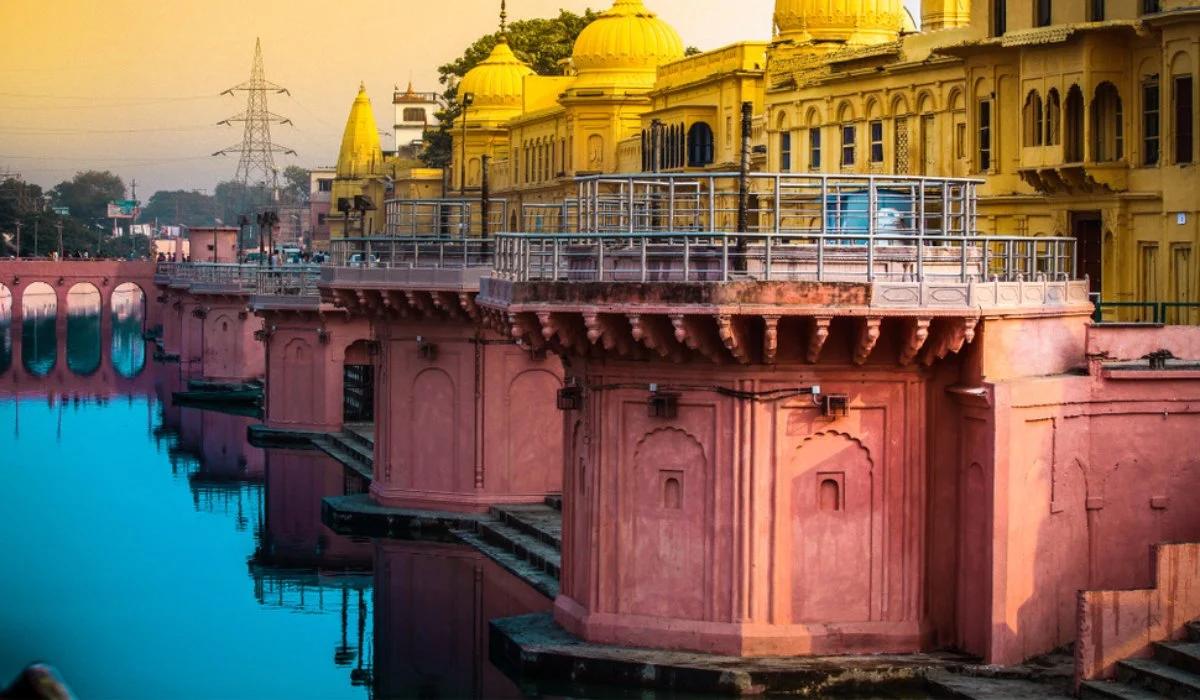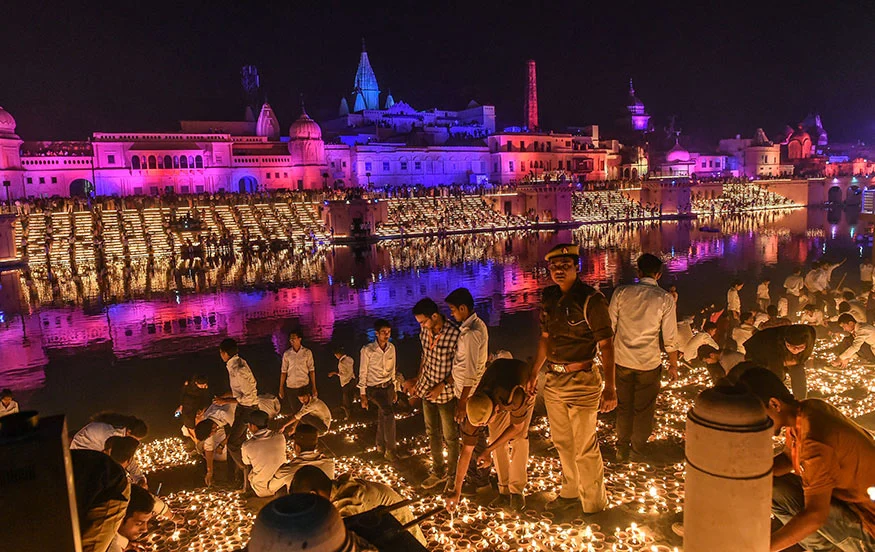Table of Contents:
- Introduction to Ayodhya’s Mythological Significance
- The Ram Janmabhoomi Temple: Birthplace of Lord Ram
- Hanuman Garhi: The Abode of Lord Hanuman
- Sita Ki Rasoi: The Symbolic Kitchen of Goddess Sita
- Kanak Bhawan: The Golden Palace
- Nageshwarnath Temple: The Legacy of Kush
- The Sarayu River: A Sacred Witness
- FAQs for Travelers
1. Introduction to Ayodhya’s Mythological Significance
Ayodhya, revered as one of Hinduism’s seven sacred cities, is steeped in mythological history. Known as the birthplace of Lord Ram, the city is dotted with temples and sites associated with the epic Ramayana. A mythological tour of Ayodhya offers a deep dive into these legendary tales, connecting visitors with India’s ancient spiritual heritage.
- Ayodhya is central to Hindu mythology, particularly the Ramayana.
- A mythological tour connects visitors to ancient spiritual stories.
2. The Ram Janmabhoomi Temple: Birthplace of Lord Ram
The Ram Janmabhoomi temple, believed to be the birthplace of Lord Ram, is a site of immense religious significance. Visitors here can learn about the epic tale of the Ramayana and the virtues of Lord Ram. The temple and its surroundings are a testament to the devotion and faith that Ramayana inspires in millions.
- Site of Lord Ram’s birth and central to the Ramayana.
- The temple is a testament to the devotion to Lord Ram.
3. Hanuman Garhi: The Abode of Lord Hanuman
Hanuman Garhi, a significant temple dedicated to Lord Hanuman, is believed to be the place where he lived and guarded Ayodhya. The temple is a symbol of devotion and strength, and visitors can explore its unique architecture while delving into the stories of Hanuman’s loyalty and bravery.
- Dedicated to Lord Hanuman, symbolizing devotion and strength.
- Visitors explore its architecture and tales of Hanuman’s loyalty.
4. Sita Ki Rasoi: The Symbolic Kitchen of Goddess Sita
Sita Ki Rasoi, regarded as the kitchen of Goddess Sita, is a place of great cultural and historical importance. It symbolizes the simplicity and virtue of Sita, offering visitors a glimpse into the domestic life of the divine figures from the Ramayana.
- Regarded as Goddess Sita’s kitchen, symbolizing her virtue and simplicity.
- Offers insights into the domestic life of divine figures.
5. Kanak Bhawan: The Golden Palace
Kanak Bhawan, known as the Golden Palace, is believed to have been gifted to Sita by Lord Ram’s stepmother Kaikeyi. The palace is adorned with beautiful architecture and idols of Ram and Sita, and it represents the royal heritage and prosperity of Ayodhya.
- Believed to be a gift to Sita, representing royal heritage.
- Adorned with beautiful architecture and idols.
6. Nageshwarnath Temple: The Legacy of Kush
The Nageshwarnath Temple, established by Kush, the son of Lord Ram, holds significance for its association with the latter part of the Ramayana. The temple, dedicated to Lord Shiva, also showcases the architectural evolution of Ayodhya over centuries.
- Established by Kush, Lord Ram’s son, and dedicated to Lord Shiva.
- Showcases Ayodhya’s architectural evolution.
7. The Sarayu River: A Sacred Witness
The Sarayu River, flowing alongside Ayodhya, is intertwined with many mythological stories. It is considered sacred and is believed to purify those who bathe in its waters. The riverbanks are also the site of various rituals and spiritual activities, offering a
peaceful and reflective experience.
- The Sarayu River is central to many mythological tales and considered sacred.
- Site of various rituals and spiritual activities, offering a serene experience.
8. FAQs for Travelers
- What is the significance of Ayodhya in Hindu mythology?
- Ayodhya is the birthplace of Lord Ram and central to the epic Ramayana.
- Is photography allowed in these mythological sites?
- Photography rules vary by site; it’s advisable to check at each location.
- How much time should I allocate for a mythological tour in Ayodhya?
- A full day is recommended to explore the key sites thoroughly.
- Are there guided tours available for these mythological spots?
- Yes, guided tours are available, offering in-depth insights into each site’s history.
- Do I need to follow any specific dress code while visiting these sites?
- Modest and respectful attire is recommended, especially in temples.
- Can I participate in any rituals at these sites?
- Participation depends on the temple’s rules, but observing rituals is always possible.
- Is there an entry fee for these mythological sites?
- Most sites do not have an entry fee, but donations are appreciated.
- Are these sites accessible for visitors with mobility issues?
- Accessibility varies across sites; some may have facilities, while others might be challenging to access.
Conclusion: A mythological tour of Ayodhya is a journey through time, bringing to life the legendary stories and characters of the Ramayana. Each site in the city tells a part of this grand epic, offering visitors not just a cultural experience but a spiritual journey as well. From the grandeur of temples to the tranquility of the Sarayu River, Ayodhya’s mythological sites provide a profound insight into India’s rich spiritual heritage, making it a must-visit destination for those seeking to connect with the country’s ancient past and enduring traditions.
- A mythological tour in Ayodhya offers profound insights into India’s spiritual heritage.
- It’s a journey through the epic tales and spiritual traditions that define this ancient city.


